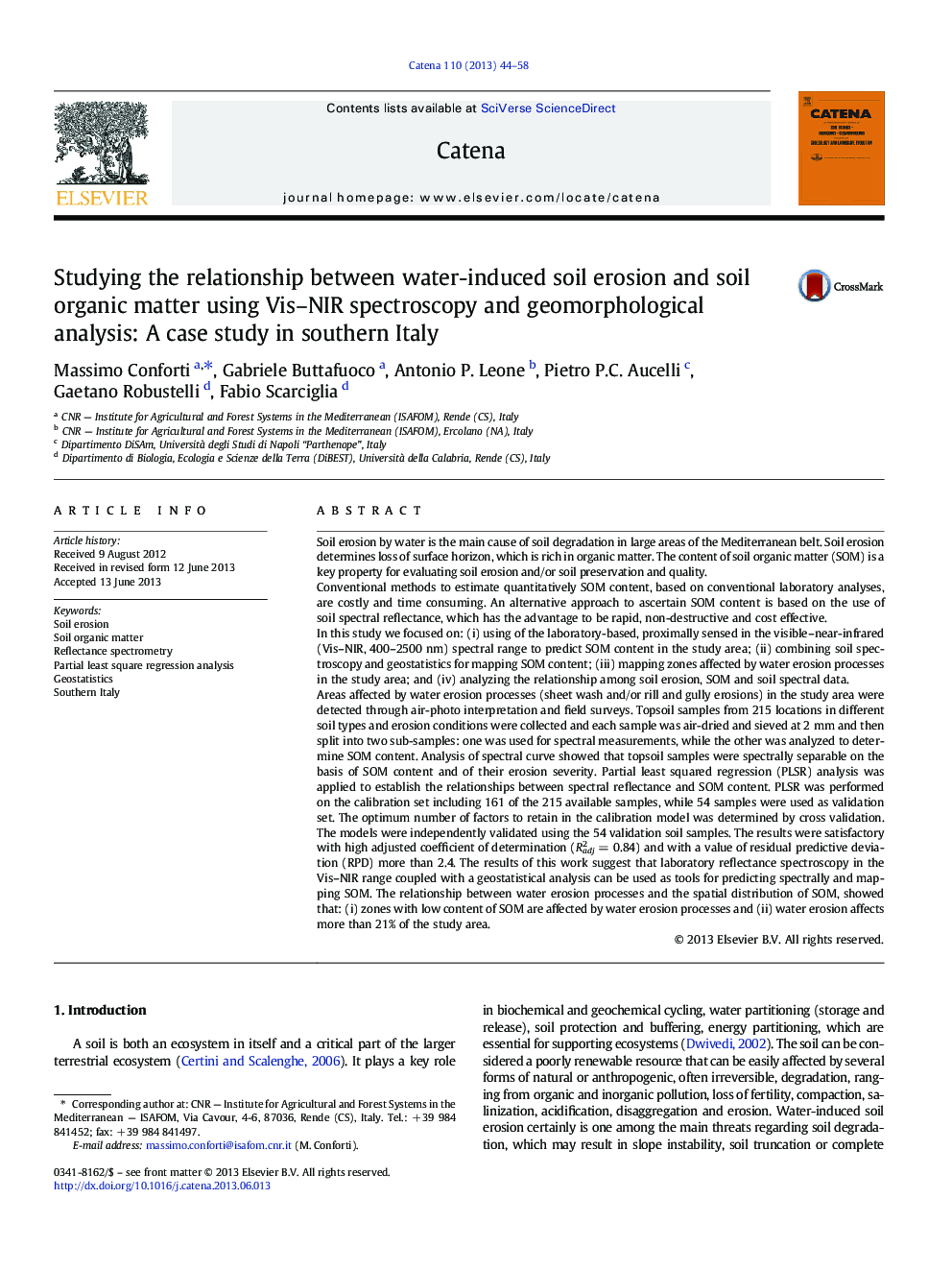| کد مقاله | کد نشریه | سال انتشار | مقاله انگلیسی | نسخه تمام متن |
|---|---|---|---|---|
| 6408153 | 1629242 | 2013 | 15 صفحه PDF | دانلود رایگان |

- The study aimed at defining soil degradation in a Mediterranean area of south Italy.
- Use the Vis-NIR spectroscopy to predict soil organic matter content
- Combine soil spectroscopy and geostatistics for mapping soil organic matter content.
- Relationship between water erosion, soil organic matter and soil spectral data
Soil erosion by water is the main cause of soil degradation in large areas of the Mediterranean belt. Soil erosion determines loss of surface horizon, which is rich in organic matter. The content of soil organic matter (SOM) is a key property for evaluating soil erosion and/or soil preservation and quality.Conventional methods to estimate quantitatively SOM content, based on conventional laboratory analyses, are costly and time consuming. An alternative approach to ascertain SOM content is based on the use of soil spectral reflectance, which has the advantage to be rapid, non-destructive and cost effective.In this study we focused on: (i) using of the laboratory-based, proximally sensed in the visible-near-infrared (Vis-NIR, 400-2500Â nm) spectral range to predict SOM content in the study area; (ii) combining soil spectroscopy and geostatistics for mapping SOM content; (iii) mapping zones affected by water erosion processes in the study area; and (iv) analyzing the relationship among soil erosion, SOM and soil spectral data.Areas affected by water erosion processes (sheet wash and/or rill and gully erosions) in the study area were detected through air-photo interpretation and field surveys. Topsoil samples from 215 locations in different soil types and erosion conditions were collected and each sample was air-dried and sieved at 2Â mm and then split into two sub-samples: one was used for spectral measurements, while the other was analyzed to determine SOM content. Analysis of spectral curve showed that topsoil samples were spectrally separable on the basis of SOM content and of their erosion severity. Partial least squared regression (PLSR) analysis was applied to establish the relationships between spectral reflectance and SOM content. PLSR was performed on the calibration set including 161 of the 215 available samples, while 54 samples were used as validation set. The optimum number of factors to retain in the calibration model was determined by cross validation. The models were independently validated using the 54 validation soil samples. The results were satisfactory with high adjusted coefficient of determination (Radj2Â =Â 0.84) and with a value of residual predictive deviation (RPD) more than 2.4. The results of this work suggest that laboratory reflectance spectroscopy in the Vis-NIR range coupled with a geostatistical analysis can be used as tools for predicting spectrally and mapping SOM. The relationship between water erosion processes and the spatial distribution of SOM, showed that: (i) zones with low content of SOM are affected by water erosion processes and (ii) water erosion affects more than 21% of the study area.
Journal: CATENA - Volume 110, November 2013, Pages 44-58